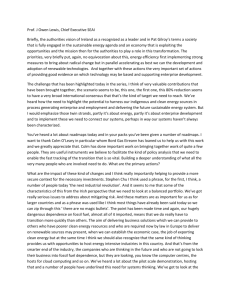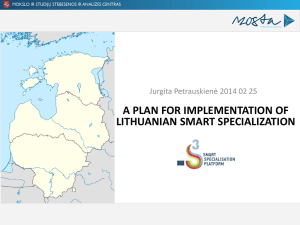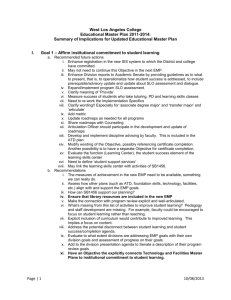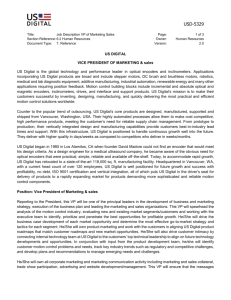Lean Aerospace Initiative Plenary Workshop Technology
advertisement
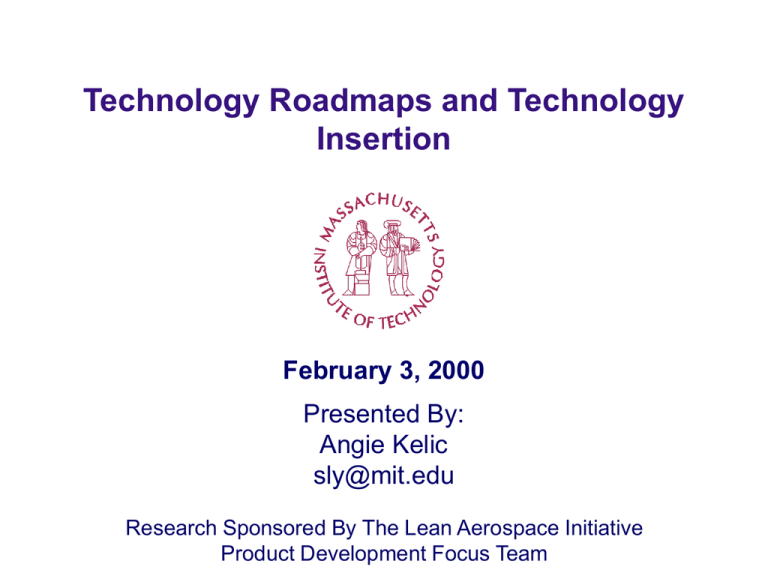
Technology Roadmaps and Technology Insertion February 3, 2000 Presented By: Angie Kelic sly@mit.edu Research Sponsored By The Lean Aerospace Initiative Product Development Focus Team Outline Motivation Technology Insertion Key Questions Hypothesis Technology Roadmaps Study Theoretical Basis Preliminary Results Next Steps PD Kelic 01272000-2 ©2000 Massachusetts Institute of Technology Motivation The problem – Long product development timelines – Obsolescence in newly operational systems – Difficulty in upgrade programs Varying technology timescales (clockspeeds) – Slower developing (example: airframe) – Faster developing (example: electronics) PD Kelic 01272000-3 ©2000 Massachusetts Institute of Technology What We Do Know About Technology Insertion Charted territory: Cost/benefit analyses NASA Technology Insertion Milestones and Technology Readiness Levels Where the problems lie: Technologies not developed with current application in mind Unexpected impacts on other parts of the system No well established technology insertion process Incorrect assessment of technology “readiness” PD Kelic 01272000-4 ©2000 Massachusetts Institute of Technology Key Questions How can knowledge of new technology be brought to bear on the product development process? How can technology readiness be determined effectively and consistently? How does one determine the side effects of introducing new technology? “Our technology roadmaps tell us when to insert new technology” PD Kelic 01272000-5 ©2000 Massachusetts Institute of Technology Hypothesis Technology roadmaps can be used to effectively predict technology performance and manage technology insertion PD Kelic 01272000-6 ©2000 Massachusetts Institute of Technology Technology Roadmaps Study Do roadmaps even exist in most cases? How are roadmaps developed and by whom? Are technology roadmaps and technology forecasting accurate? Are there factors that are key to accuracy and what are they? Are roadmaps actually used or are they simply developed? PD Kelic 01272000-7 ©2000 Massachusetts Institute of Technology Theoretical Basis Clockspeed - Fine – “fruit flies” – supply chain management Technology forecasting - Irvine and Martin – Three levels of forecasting in industry – macro-level: broad trends, typically conducted by government agencies - DoD – sector-level forecasts: typically conducted by industrial associations, or multi-client consultancy organizations Sematech, NCAT, AIAA, IEEE – specific research forecasts relating to particular technologies or new product lines - companies PD Kelic 01272000-8 ©2000 Massachusetts Institute of Technology Do Roadmaps Exist? YES!! Two types: – investment direction roadmaps – how to spend research dollars – detailed technology roadmaps – predicting technology characteristics – combination of Delphi method and historical trend analysis Varying levels of implementation PD Kelic 01272000-9 ©2000 Massachusetts Institute of Technology Technology Roadmaps Study Do roadmaps even exist in most cases? How are roadmaps developed and by whom? Are technology roadmaps and technology forecasting accurate? Are there factors that are key to accuracy and what are they? Are roadmaps actually used or are they simply developed? PD Kelic 01272000-10 ©2000 Massachusetts Institute of Technology Detailed Technology Roadmaps Experts on the technology make the roadmap Information from array of sources – – – – trade journals information from suppliers R&D DoD, trade organization roadmaps Review – peers, suppliers, upper management PD Kelic 01272000-11 ©2000 Massachusetts Institute of Technology Roadmapping Process 1. Gather 2. Develop 3.Review Information 4. Refine 5. Distribute 6. Use? PD Kelic 01272000-12 ©2000 Massachusetts Institute of Technology Technology Roadmaps Study Do roadmaps even exist in most cases? How are roadmaps developed and by whom? Are technology roadmaps and technology forecasting accurate? Are there factors that are key to accuracy and what are they? Are roadmaps actually used or are they simply developed? PD Kelic 01272000-13 ©2000 Massachusetts Institute of Technology Are They Effective in Prediction? Gather old roadmaps – various technologies – roadmaps and updates Examine variance in predictions Examine actual state of the art for predicted year Example: Semiconductor Industry Association Roadmaps PD Kelic 01272000-14 ©2000 Massachusetts Institute of Technology SIA Roadmaps for Semiconductors Power Supply Voltage 3.5 1994 1997 1998 1999 3 2.5 2 1.5 1 0.5 0 1993 1998 2003 2008 2013 2018 PD Kelic 01272000-15 ©2000 Massachusetts Institute of Technology Next Steps Validate and refine the process description Gather more roadmap data – Determine accuracy Examine variance and attempt a correlation with technology characteristics Participants to date: HP, Raytheon, ACC, Textron, AlliedSignal, Boeing, Sematech, NorthropGrumman, Saab PD Kelic 01272000-16 ©2000 Massachusetts Institute of Technology Technology Roadmaps Study Do roadmaps even exist in most cases? How are roadmaps developed and by whom? Are technology roadmaps and technology forecasting accurate? Are there factors that are key to accuracy and what are they? Are roadmaps actually used or are they simply developed? PD Kelic 01272000-17 ©2000 Massachusetts Institute of Technology
